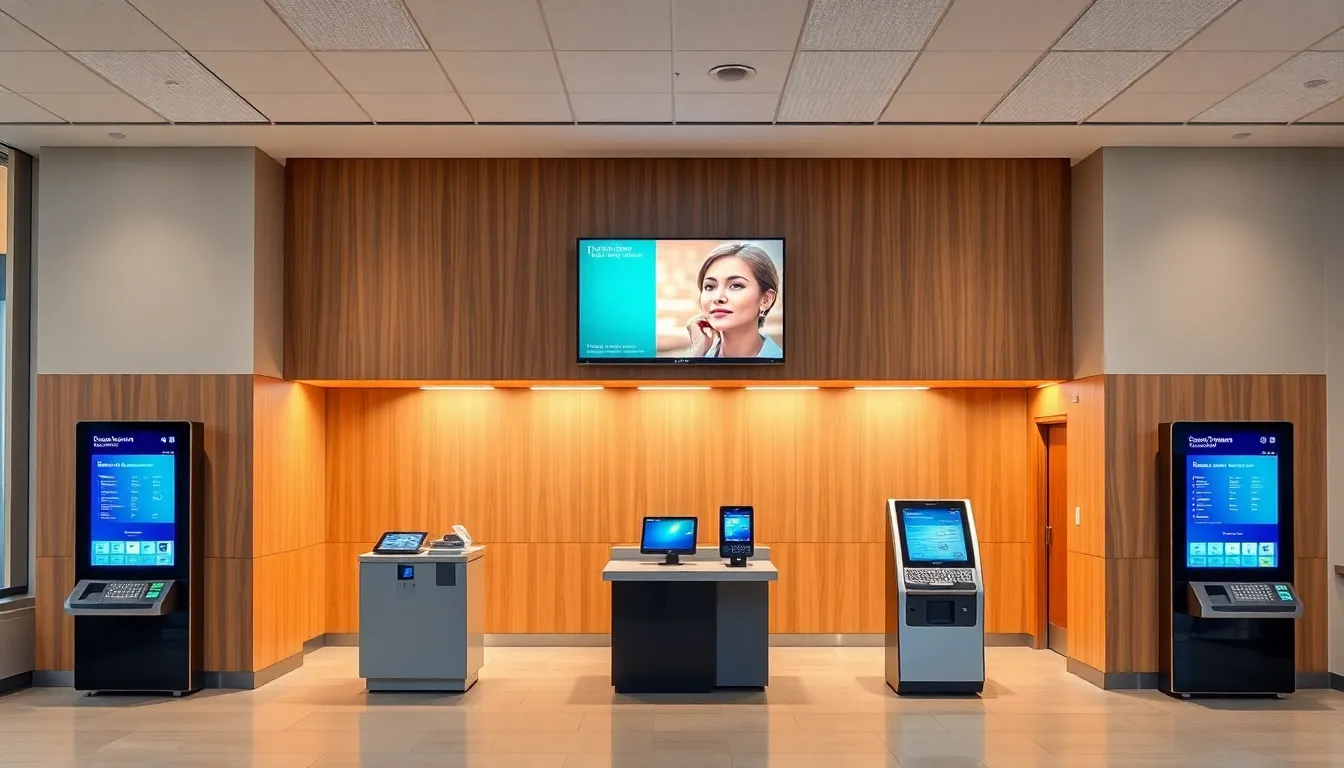In today’s fast-paced world, digital banking has transformed how people manage their finances. It offers a convenient and efficient way to handle transactions without the need for traditional brick-and-mortar banks. With just a few taps on a smartphone, users can access their accounts, transfer money, and pay bills anytime, anywhere.
As technology continues to evolve, digital banking is becoming increasingly popular among consumers of all ages. From mobile apps to online platforms, it provides a seamless banking experience tailored to individual needs. Understanding what digital banking entails is crucial for anyone looking to navigate the modern financial landscape effectively.
What Is Digital Banking?
Digital banking refers to the online and mobile services provided by financial institutions to manage accounts and conduct transactions. It allows users to perform banking activities without needing to visit a physical branch.
Key Features of Digital Banking
- Account Management: Users can access account statements, transfer funds, and pay bills through secure online platforms.
- Mobile Banking Apps: Many banks offer mobile applications that facilitate convenient account access, enabling transactions on the go.
- 24/7 Availability: Services remain accessible around the clock, allowing users to manage finances whenever necessary.
- Personalized Services: Digital banking often includes tailored offerings based on user behavior and preferences, enhancing the overall banking experience.
- Enhanced Security: Advanced encryption and secure authentication methods protect sensitive information from unauthorized access.
Benefits of Digital Banking
- Convenience: Digital banking eliminates the need for physical visits, saving time for users.
- Reduced Costs: Many digital banks charge lower fees than traditional banks due to lower operational costs.
- Instant Transactions: Users can instantly transfer funds and receive payments, streamlining financial management.
- Easy Account Access: Users monitor account activity and balances in real-time, improving financial awareness.
Digital banking continues to evolve, driven by technological advancements and changing consumer preferences. As more users adopt digital platforms, understanding digital banking remains essential for effective financial management.
History of Digital Banking

Digital banking has its roots in advancements in banking technology, marking a significant shift from traditional banking methods to more efficient digital solutions.
Evolution of Banking Technology
Banks began to implement technology in the 1960s with automated teller machines (ATMs), allowing customers to access cash without visiting a branch. In the 1980s, online banking emerged, enabling account holders to view balances and transaction histories through basic internet services. The 1990s saw the introduction of more robust online banking platforms, offering bill payment and fund transfers. The 2000s brought significant improvements in mobile technology, with smartphones allowing users to manage banking tasks on-the-go. Today, cutting-edge technologies like artificial intelligence and blockchain further enhance digital banking, providing secure and personalized experiences.
Key Milestones in Digital Banking
| Year | Milestone |
|---|---|
| 1969 | First ATM installed in the US. |
| 1983 | First online banking service launched. |
| 1994 | First full-service online bank established. |
| 2007 | Introduction of mobile banking apps. |
| 2010 | Contactless payments become mainstream. |
| 2020 | Significant surge in digital banking usage due to the COVID-19 pandemic. |
These milestones illustrate the rapid progression of digital banking, showcasing its transformation from simple ATM access to a complex ecosystem of financial services available at users’ fingertips.
Types of Digital Banking Services
Digital banking encompasses various services that enhance user experience and streamline financial management. The primary categories of digital banking services include online banking, mobile banking, and digital-only banks.
Online Banking
Online banking refers to web-based services offered by traditional banks and financial institutions. Users access their accounts via a secure website, allowing them to perform transactions like fund transfers, bill payments, and account monitoring. Key features include:
- Account Management: Users can view balances, transaction history, and account statements.
- Fund Transfers: Instant transfers among accounts or external banks provide flexibility.
- Bill Payments: Automated payments streamline managing recurring expenses.
- Customer Support: Online chat and email options facilitate quick assistance.
Mobile Banking
Mobile banking provides financial services through dedicated smartphone applications. These apps offer convenience and accessibility for users to manage their finances on the go. Notable features consist of:
- App Interfaces: User-friendly designs enhance navigation and usability.
- Mobile Deposits: Users can deposit checks using their smartphone cameras.
- Alerts and Notifications: Real-time alerts keep users informed about account activity.
- Geolocation Services: Users can find nearby ATMs and branches easily.
Digital-Only Banks
Digital-only banks operate exclusively online without physical branches. They often provide lower fees and competitive interest rates due to reduced operating costs. Essential aspects include:
- No Physical Locations: Users manage all transactions online or via mobile apps.
- 24/7 Availability: Accessibility ensures users can conduct banking activities at any time.
- Innovative Features: Many digital-only banks offer budgeting tools and expense tracking features.
- Enhanced Security: Strong encryption and multifactor authentication maintain user safety.
These digital banking services cater to diverse user needs, making financial management more accessible and efficient.
Benefits of Digital Banking
Digital banking offers numerous advantages that enhance financial management. Users benefit from features designed to simplify and improve their banking experiences.
Convenience and Accessibility
Digital banking provides easy access to financial services anytime, anywhere. Users manage accounts, transfer funds, and pay bills without needing to visit a physical branch. Mobile banking apps facilitate quick transactions on smartphones, ensuring banking services are always within reach. This convenience appeals to individuals leading busy lives, allowing them to prioritize their time efficiently.
Cost-Effectiveness
Digital banking often reduces banking fees compared to traditional banking models. Many digital banks offer lower or no maintenance fees, decreasing overall banking costs. Users save money on travel expenses by conducting transactions online. They also benefit from competitive interest rates on deposits, maximizing their savings potential.
Enhanced Customer Experience
Digital banking enhances customer satisfaction through personalized services. Financial institutions utilize data analytics to offer tailored recommendations based on individual spending habits. Instant notifications about account activity improve financial awareness and security. Additionally, 24/7 customer support, often through chatbots and virtual assistants, ensures users receive assistance whenever needed, further elevating the overall banking experience.
Challenges of Digital Banking
Digital banking faces several challenges that can impact user trust and accessibility. Understanding these challenges is essential for users navigating the digital banking landscape.
Security Concerns
Security concerns represent a significant challenge in digital banking. Cybersecurity threats, such as phishing attacks and data breaches, pose risks to sensitive financial information. Financial institutions invest heavily in advanced security measures, including encryption and multi-factor authentication, to protect user accounts. Users play a crucial role in safeguarding their data by adhering to best practices, such as using strong passwords and regularly monitoring account activity. Despite advancements in security technologies, the evolving nature of cyber threats demands ongoing vigilance from both banks and users.
Digital Divide
The digital divide refers to the disparity in access to digital banking services among different demographics. Factors such as age, socioeconomic status, and geographic location contribute to this gap. Older individuals and those in low-income areas may lack the necessary technology or internet connectivity, limiting their ability to access digital banking services. Additionally, financial literacy plays a vital role; individuals unfamiliar with technology may struggle to navigate online banking platforms. Financial institutions aim to address this divide by providing inclusive services, offering educational resources, and exploring partnerships with community organizations to enhance accessibility for all users.
Future of Digital Banking
Digital banking is set to transform further with emerging trends and technologies reshaping the financial landscape. As institutions adapt to these changes, they enhance user experiences and optimize operations.
Trends Shaping Digital Banking
- Increased Mobile Adoption: Mobile banking apps are transforming how users access financial services. Features like biometric authentication and real-time notifications enhance security and convenience.
- Artificial Intelligence Integration: AI powers chatbots and personalized financial advice tools, streamlining customer service and improving user interaction.
- Virtual and Augmented Reality Use: Banks explore VR and AR for immersive customer experiences, such as virtual branch tours or interactive investment tutorials.
- Open Banking Initiatives: Open banking promotes transparency and competition by allowing third-party developers to create applications using banks’ financial data, ultimately benefiting users with tailored services.
- Sustainability Focus: Digital banking is increasingly adopting green practices, such as paperless transactions and eco-friendly investment options, catering to environmentally conscious consumers.
The Role of Fintech in Digital Banking
Fintech companies drive innovation in digital banking, offering specialized services that traditional banks may lack.
- Payment Solutions: Fintech firms provide faster and more efficient payment processing options, enhancing transaction experiences.
- Peer-to-Peer Lending: Fintech platforms facilitate loans directly between individuals, bypassing traditional banks, resulting in lower interest rates for borrowers and higher returns for investors.
- Personal Finance Management: Fintech applications assist users in budgeting, saving, and investing, empowering them to take control of their finances.
- Blockchain Technology: Fintech embraces blockchain for secure and transparent transaction records, improving security and trust in digital transactions.
- Regulatory Technology: Fintech companies develop solutions to assist financial institutions in complying with regulations efficiently, ensuring consumer protection and industry standards.
The continued collaboration between digital banks and fintech enhances innovation and service delivery, ensuring users benefit from improved financial products.
Conclusion
Digital banking is reshaping how individuals manage their finances. With its emphasis on convenience and efficiency, it caters to a diverse range of users. The evolution of technology continues to drive innovation in this sector, making banking more accessible than ever.
As users navigate this dynamic landscape, understanding the benefits and challenges of digital banking is essential. Financial institutions are committed to enhancing security and inclusivity, ensuring that everyone can take advantage of these modern services. The future promises even greater advancements, making it an exciting time for consumers to engage with their financial management in new ways.















